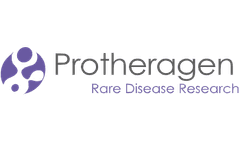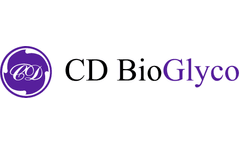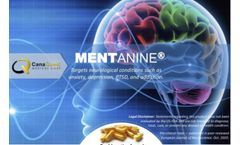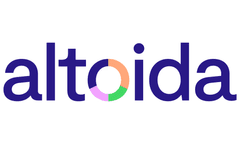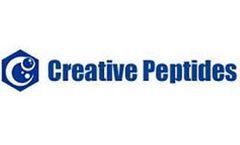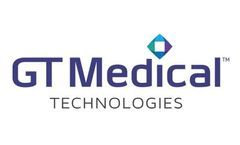Brain Blood Articles & Analysis
22 articles found
Astrocytes, the star-shaped glial cells in the brain, play crucial roles in maintaining homeostasis, supporting neuronal function, and responding to injury. ...
Crossing Physiological Barriers A formidable challenge in drug development is designing formulations that can cross physiological barriers, such as the blood-brain barrier. Nanoparticles exhibit unique properties that allow them to penetrate these barriers, facilitating the delivery of therapeutic agents to previously inaccessible sites. ...
The dual-purpose mutated membranes of red blood cells improved NPs’ binding to brain and tumour cells and contained PLGA particles encoding Euphorbia factor L1. This combined entity is able to cross the blood-brain barrier (BBB) and blood-brain tumour barrier (BBTB) with systemic injection, ...
Alfa Cytology has introduced its advanced drug development services for brain tumors. Alfa Cytology, celebrated for its cutting-edge biotech solutions and extensive tumor research expertise, has recently introduced brain tumor drug development services, designed to empower researchers in understanding the intricacies and unique challenges associated with ...
Doxil®, a PEGylated liposomal formulation of doxorubicin, is a well-known example used in cancer treatment. Improving Blood-Brain Barrier Penetration The blood-brain barrier (BBB) is a significant obstacle in the delivery of therapeutic agents to the central nervous system (CNS). PEG derivatives have shown the potential to ...
Small molecule drugs are crucial for targeting the molecular pathways and signaling mechanisms involved in the growth and development of brain tumors. These drugs can cross the blood-brain barrier and enter directly into the tumor cells, thus exerting a targeted effect. ...
Promote the binding of nanoparticles to lipoprotein receptor-related protein (LRP), thereby effectively promoting the nanoparticles to cross the blood-brain barrier (BBB), which has potential application value in the treatment of brain diseases. ...
Stroke, also known as transient ischemic attack or cerebrovascular accident, is an acute brain disease. Usually, a sudden rupture of a blood vessel in the brain or a blockage of a blood vessel that prevents blood from flowing to the brain can cause damage to brain tissue, ...
The unique molecular structure enables it to have good tissue penetration, shorter half-life and higher renal clearance rate, and can penetrate the blood-brain barrier. Structurally, nanobodies are composed of complementarity-determining regions and framework regions. ...
It can effectively combat various ALK-secondary resistance gene mutations, and has strong central nervous system permeability, maintaining high blood concentration in brain tissues. About anaplastic lymphoma kinase (ALK) ALK was first identified in a subtype of anaplastic large-cell lymphoma (ALCL), hence named anaplastic lymphoma kinase (ALK). ...
And just like the protein found in milk, chicken, and egg whites—the protein in turkey contains several amino acids. For tryptophan to cross the blood-brain barrier (BBB) and produce serotonin (the hormone that regulates sleep), it first has to compete with the other amino acids in turkey. ...
The dorsal vagal complex is one of the few crossroads in the central nervous system, where there is no blood-brain barrier and circulating factors in the blood can transmit information directly to the brain. ...
About: CanaQuest Medical is an award-winning, Clinical Stage/Life-Sciences company focused on the drug discovery and development of next-generation targeted therapeutics within the endocannabinoid system and specific brain receptors. The Company is focused on treating neurological conditions, such as epilepsy, anxiety, depression, and Post Traumatic Stress Disorder “PTSD,” including ...
It is no secret that glucose, a form of sugar, is the main source of energy for every cell in our bodies, including our brain cells. Because the brain is packed with neurons, it uses more energy than any other organ in the body. Our brains reward us for consuming sugar. Whether you are eating a delicious meal, sharing a kiss with someone you love, or enjoying a sugary treat, the mesolimbic ...
By now, you are likely aware of many of the well-established risks associated with smoking cigarettes, such as cancer, asthma, chronic obstructive pulmonary disease (COPD), diabetes, cardiovascular disease, and stroke. But did you know that research has discovered a link between smoking and cognitive decline? This research emphasizes the importance of identifying and controlling modifiable risk ...
Other CPPs present additional advantages such as tumor-homing, penetration through the blood-brain barrier, and antimicrobial activity. l FeaturesThe most remarkable feature of cell-penetrating peptides is that it’s able to penetrate the cell membrane at low micromolar concentrations in vivo and in vitro, without using any chiral receptors and without causing ...
Second, the stability of RNA drugs: there are plenty of ribonuclease enzymes in human blood and tissue fluid, usually naked RNA without chemical modification is eliminated by them before it enters the cell. ...
CURRENT STANDARD OF CARE FOR BRAIN TUMORS The current initial standard of care for aggressive brain tumors—whether they are primary brain tumors (ie, tumors that originate in the brain), or metastatic tumors from cancers that started outside of the brain—is resection. After surgery, a follow-up ...
Osteoarticular disease: It can neutralize harmful acidic substances in the body and lower blood uric acid value to relieve gout and other bone and joint diseases. ...
In the spinal cord, after white matter injury (WMI), NFIA-deficient astrocytes exhibit defects in blood-brain barrier remodeling, which are correlated with the suppression of timely remyelination. ...





